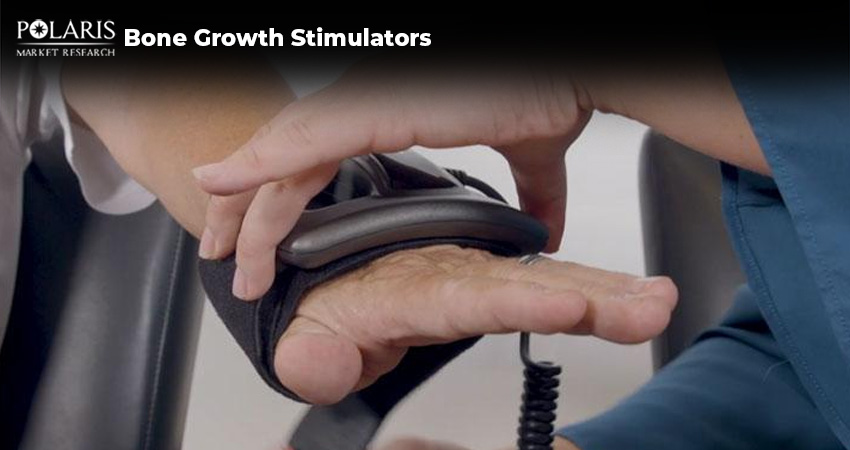Enabling Faster Healing of Bones with Bone Growth Stimulators

Broken bones can be more than just painful; they can disrupt life for months. Traditional healing methods like casts and immobilization work, but what if the recovery could be accelerated? Bone growth stimulators are advanced medical devices designed to enhance the body’s natural healing process using technologies like electromagnetic waves, ultrasound, and electrical currents. These devices have been around for a few decades, but recent technological advancements have led to the development of more effective and efficient appliances.
With applications ranging from recovery following stress fractures in athletes to aiding seniors with osteoporosis and supporting individuals undergoing spinal fusion, these devices represent a significant shift in treatment options. In this blog, we’ll dive into how bone growth stimulators work, who can benefit from them, the science behind their effectiveness, and what the future holds for this revolutionary treatment.
What Are Bone Growth Stimulators (BGS)?
BGS are medical devices designed to enhance the natural healing process of bone fractures, spinal fusions, and non-union bones. They work by delivering low-level electrical/ ultrasonic waves to stimulate bone cells, encouraging faster regeneration and repair. Think of them like a fitness coach, but for your bones. Instead of doing reps and sets, your bones are being encouraged to grow stronger by physical signals.
Types of BGS
There are mainly two types of bone growth stimulators:
- Electrical BGS: These are devices that utilize electric fields or currents to promote bone healing, particularly in cases of non-union fractures or spinal fusion surgeries. These electrical bone stimulators come in both internal (implanted) and external (worn) versions. These devices send pulsed electromagnetic fields (PEMF) or direct electrical current to the treatment site. The idea is to mimic natural bone-healing electrical signals that our body generates during injury.
- Ultrasound Bone Healing Devices: Ultrasound bone growth stimulators are external devices that use low-intensity, pulsed ultrasound to accelerate bone healing, particularly for fractures that aren't healing properly or are at risk of nonunion. The waves caused by the device cause micromechanical stress that kick-starts the bone-building process.
Bone Growth Stimulator Market in Numbers
Bone growth stimulator market value in 2024: USD 1,131.25 million
Expected CAGR: 5.1% from 2025 to 2034
Market Value in 2025: USD 1,186.12 million
Market Forecast by 2034: USD 1,855.88 million
Emerging Market Trends
Technological Advancements
Manufacturers are focusing on creating devices that are easier for patients to use and understand, promoting better compliance and potentially improving treatment outcomes. The popularity of non-invasive and minimally invasive surgical procedures is driving demand for BGS that can be used effectively in these settings. AI, machine learning, and IoMT are being incorporated into bone growth stimulators to enhance their precision and effectiveness. These technologies can help optimize stimulation parameters, personalize treatment plans, and monitor patient responses in real-time.
Rise in Complex Fractures
The rising cases of complex fractures are driving the market for bone growth stimulators, driven by factors like an aging population, increasing sports injuries, and advancements in technology. In addition to increasing fractures, other orthopedic conditions like osteoporosis and osteoarthritis are also increasing, leading to a greater need for therapies that can promote bone regeneration. Improvements in electrical and ultrasound stimulation technologies have enhanced the effectiveness of BGS, making them a more attractive option for various orthopedic conditions.
Non-Invasive & Convenience
The non-invasive and convenient nature of BGS is driving their increased adoption, particularly among patients seeking home-based treatments and those in aging populations. Most of these devices are wearable bone growth stimulators, painless, and easy to use at home. No need for additional surgeries or hospital stays. This is particularly appealing to older populations who may be more inclined to seek non-surgical options and to patients who prefer the convenience of home-based treatments. As regulatory support and reimbursement policies become more favorable, the adoption of bone growth stimulators is expected to increase.
Key Benefits of BGS
- Accelerated Healing: BGS can significantly speed up the natural healing process of fractures and spinal fusions, potentially reducing healing time and the likelihood of complications.
- Improved Healing in Challenging Cases: Bone stimulators are particularly helpful in cases of nonunion fractures (where bones fail to heal properly), delayed union, and spinal fusions with a history of poor healing.
- Non-Surgical Option: BGS provide a non-invasive alternative to surgery for treating non-healing fractures and fusions, avoiding the risks and recovery time associated with surgery.
- Improved Quality of Life: By speeding up healing and reducing pain, bone stimulators can improve the patient's quality of life and allow them to resume normal activities sooner.
Who Needs a BGS?
Not every fracture needs a stimulator, but in specific situations, it can be a lifesaver (or bone-saver).
Patients might benefit if:
- Fracture isn’t healing after 3+ months.
- Recovering from spinal fusion surgery.
- Have medical conditions like diabetes or osteoporosis that delay healing.
- Had repeated surgeries on the same site.
- Want to avoid invasive revision surgeries.
Final Thoughts
BGS may not yet be widely recognized, but they are rapidly transforming the way bone recovery is approached in both clinical and personal settings. For individuals dealing with slow or stalled bone healing, whether athletes recovering from injuries, accident survivors, or patients post-surgery, BGS offers a promising solution to accelerate recovery. These devices work by enhancing the body’s natural healing process, helping bones heal more efficiently and reducing recovery time.
While they are not a cure-all, when used correctly, BGS can significantly improve healing outcomes, enabling individuals to return to their normal lives more quickly and with greater strength. As advancements in BGS technology continue, their role in modern healthcare is poised to expand, offering greater accessibility and effectiveness for patients seeking faster and safer recovery.

